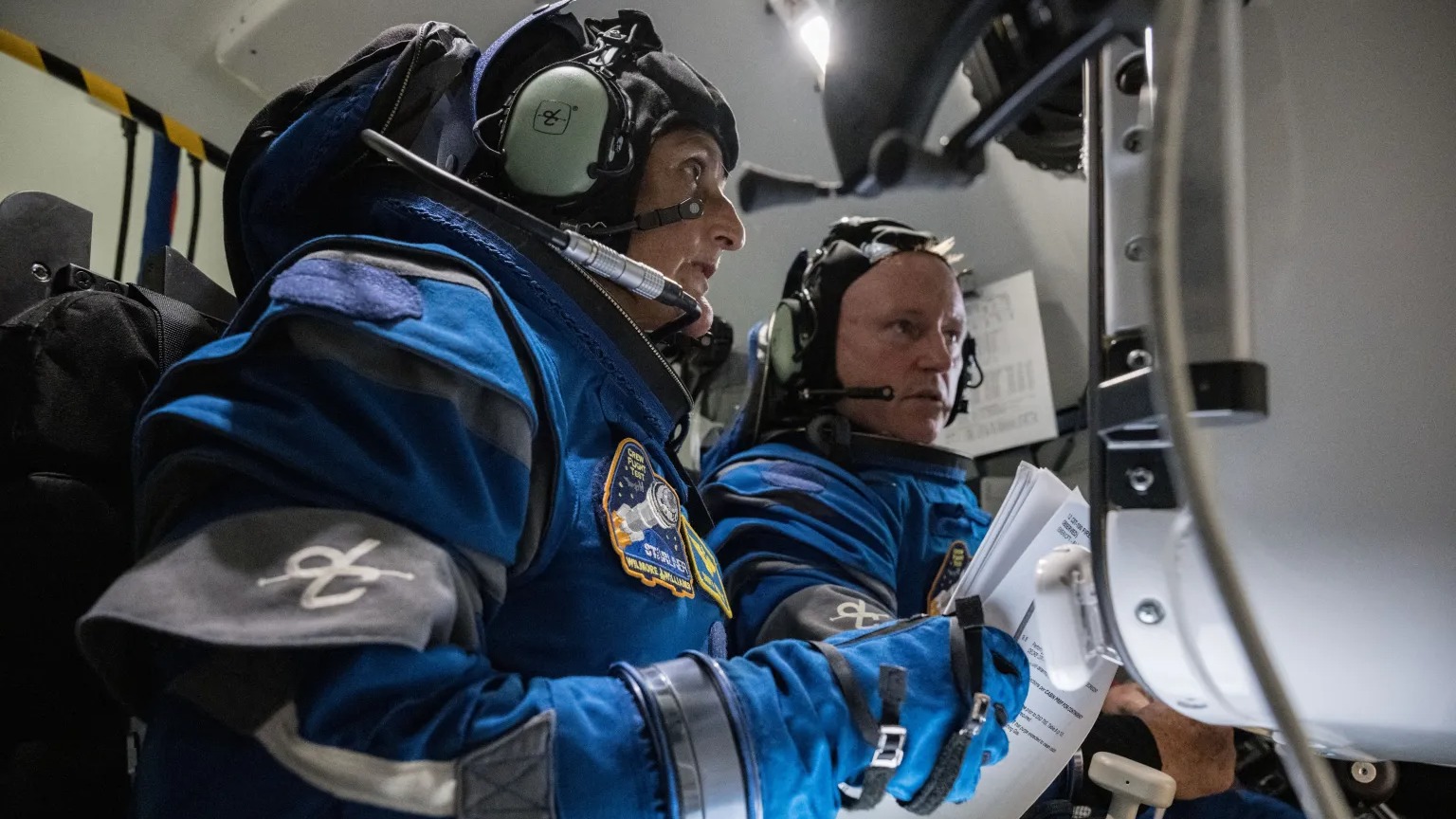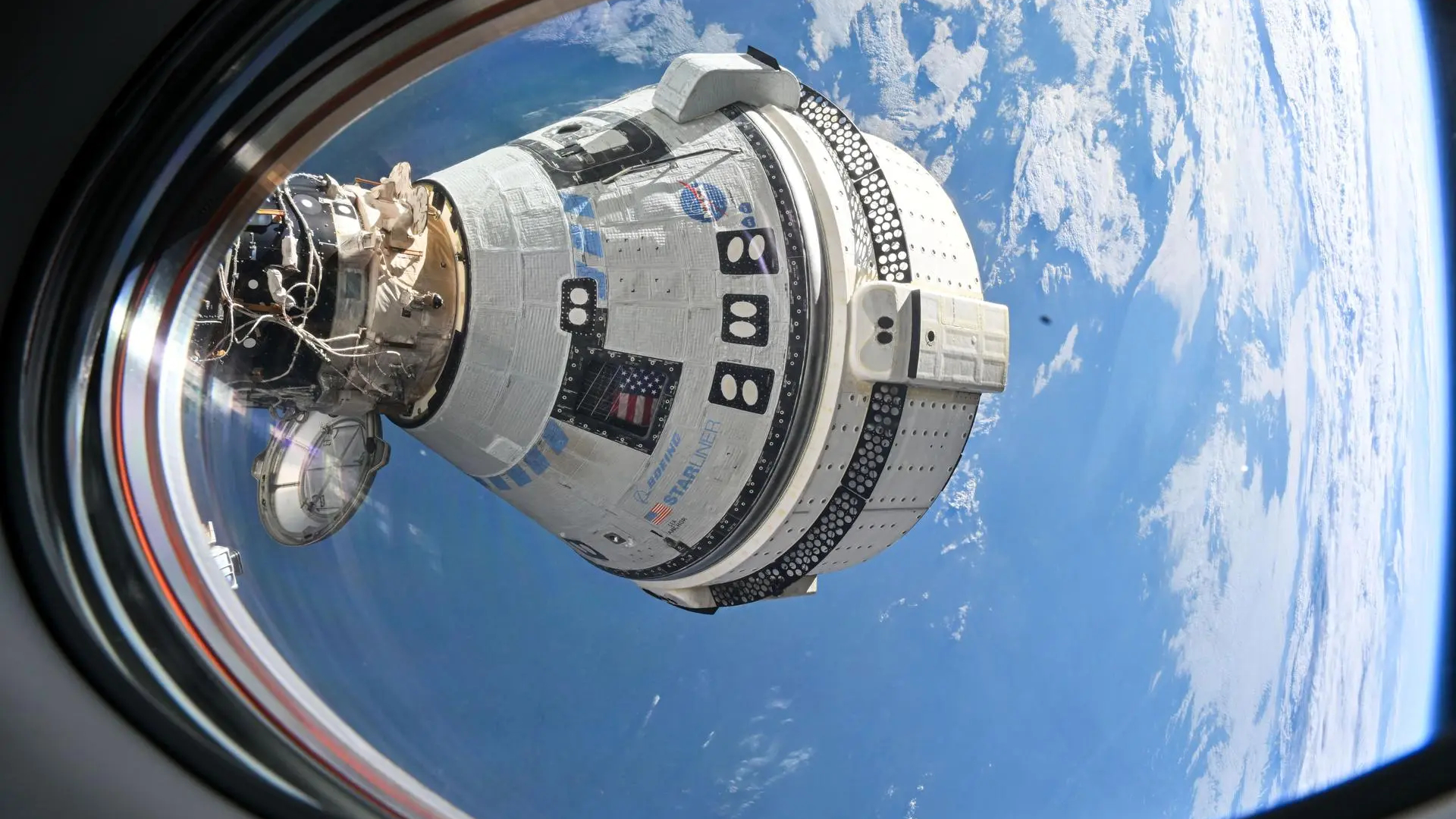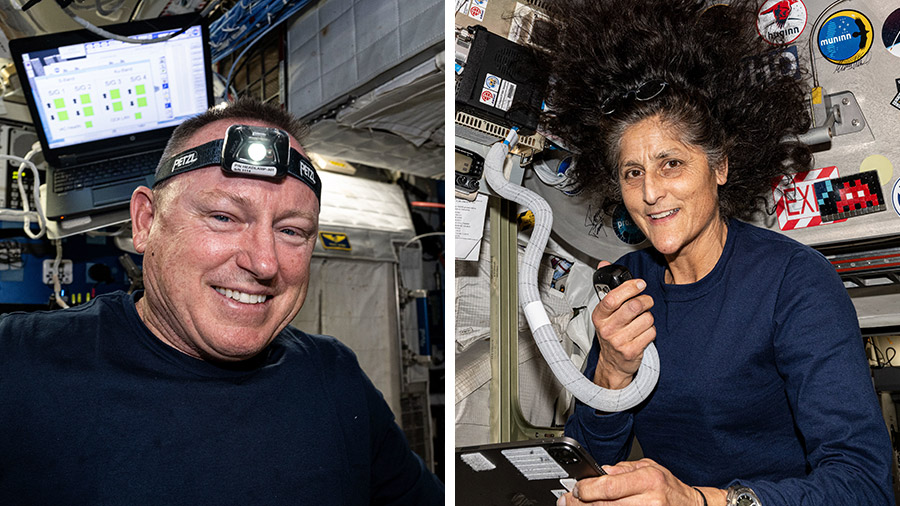
In the unlikely event a space emergency arises on the space station in the near future, two astronauts will have to ride home without spacesuits.
Boeing's Starliner spacecraft is set to depart the International Space Station (ISS) empty no earlier than tomorrow (Sept. 6). It carried NASA astronauts Butch Wilmore and Suni Williams up to the ISS and was expected to bring them home in Boeing-made spacesuits. But after Starliner's propulsion system acted up during docking with the ISS June 6, NASA eventually concluded that putting the astronauts on board for a return would be too much of a risk.
For a few weeks, a SpaceX spacecraft that flew the Crew-8 mission to the ISS will be the emergency vehicle available for Williams and Wilmore if the orbiting complex needs evacuation. But the Starliner suits are not compatible with SpaceX's Crew Dragon spacecraft, NASA commercial crew manager Steve Stich told reporters during a teleconference yesterday (Sept. 6). "So in a temporary situation, we would not have suits for Butch and Suni on Dragon," he explained.

SpaceX and Boeing are the two commercial vendors tasked with sending up American-launched astronauts to the ISS. Each company not only has its own spacecraft, but its own spacesuits. (Russia also has its own spacecraft and spacesuits for the Soyuz spacecraft, which launches and lands crews from Kazakhstan.)
Crew-8 already has four spacesuited astronauts occupying its four seats as they conclude a half-year mission in space: NASA's Matthew Dominick, Michael Barratt, Jeanette Epps and Roscosmos cosmonaut Alexander Grebenkin. If required, Williams and Wilmore would ride home with the Crew-8 astronauts on the cargo pallet underneath their Crew Dragon spacecraft's seats.

As Crew Dragon is fully pressurized, there are no nominal issues for the two Starliner astronauts on board, but the tiny risk of depressurization could pose a critical risk.
Such an accident has happened before, when the Soviet Union's Soyuz 11 crew of three died during landing after a valve popped open in their spacecraft; none of the cosmonauts was wearing a spacesuit.
On NASA's side, all crews have been spacesuited for launches and landings since the fatal Challenger space shuttle launch disaster of 1986 that killed seven astronauts.
But the chances of Wilmore and Williams having to ride home without suits are shrinking daily, as Crew-8's standby role for Starliner will not last for long. Crew-9, the next SpaceX astronaut mission for NASA, is set to launch no earlier than Sept. 24 for a normal ISS half-year mission. Crew 9's Crew Dragon will launch with only two astronauts, instead of the planned four, to make room for Williams and Wilmore. One spacesuit will also be shipped to the ISS sized for Wilmore, as Williams can use a SpaceX suit on board ISS.
"We do have one suit on orbit right now that fits Suni, and she's tried that suit on, and it fits well. That's a SpaceX suit," Stich said. "When we [NASA] set up the contract, we let each of the contractors to find their own suits and their own interface, and then we're sending up a suit for Butch that will fly up on Crew-9."
Crew-9's Crew Dragon will serve as the emergency evacuation for the four astronauts manifested to fly home on it: Wilmore, Williams, NASA astronaut and Space Force Guardian Nick Hague, and Roscosmos mission specialist Aleksandr Gorbunov. The nominal plan calls for the quartet to return to Earth in February 2025, after Hague and Gorbunov spend about five months in space and Wilmore and Williams, eight months.







